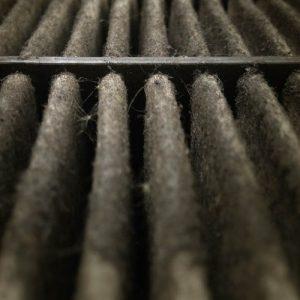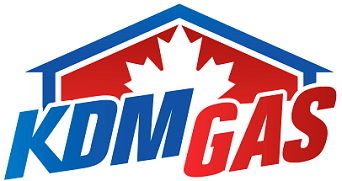 Your furnace works hard all day to keep your house warm, but many people forget they exist. So, when they go to change their filter and notice it is pitch black, they’re not sure what to do.
Your furnace works hard all day to keep your house warm, but many people forget they exist. So, when they go to change their filter and notice it is pitch black, they’re not sure what to do.
Why is your furnace filter black? Well, a black filter can be a sign of many issues and is something you should address sooner than later. The team at KDM Home & Gas is here to talk about some common reasons why your furnace filter is black.
What Is a Furnace Filter and What Does it Do?
Modern furnaces have a filter directly next to the blower that works to trap airborne particles and contaminants. Despite what many people think, furnace filters do not function to improve indoor air quality. Instead, it works to keep particles and contaminants out of your furnace unit. A side effect of this process is better air quality.
Most furnace filters use paper and polyester fabric to capture microparticles. Minimum Efficiency Reporting Values (MERV) refer to a filter’s ability to capture contaminants. The higher the MERV rating, the smaller particles the filter can catch. Most residential furnace filters have a MERV rating of 6-12. The most efficient filters have MERV ratings higher than 16.
Common Causes of a Black Furnace Filter and How to Fix
Carbon Monoxide
If you notice black furnace filters, one of the first things you should do is check carbon monoxide levels. Furnaces can produce carbon monoxide, which then leaks into your house. Carbon monoxide can leave a sooty residue and turn your furnace filter black.
Carbon monoxide is extremely dangerous in high concentrations. If carbon monoxide levels are high, it could be a problem with your furnace. Call a professional immediately to check for any leaks and exhaust fumes in your home.
Soot and Dirt
Filter furnaces capture air particles and other debris. Over time, they can become saturated with a thick layer of black soot, dust, and dirt. The longer you go without changing your filter, the more clogged your filter will become.
Things like scented candles and fireplaces can contribute to higher air particulate levels than normal. Candles produce large quantities of soot, wax, and other substances, so your filter will become dirty if you burn candles frequently. Gas fireplaces can also produce soot during the combustion reaction. Other sources such as pets, pollen, and dust can clog furnace filters and turn them black.
Mold
Furnace filters can also clog and turn black from mold and bacteria growth. Your HVAC system uses several components, such as condenser coils that produce condensation. This condensation can leak into your vents and cause mold growth on filters.
Mold can also grow in your ducts and near vents, and is more likely to form in places with a lot of moisture, such as basements and crawl spaces. Make sure you check your ducts and filters for moisture, especially after the rainy season. You can keep your vents and filters clean by scheduling regular HVAC cleaning and service.
How Often Should I Change My Furnace Filter?
How often you should change your furnace filter depends on the type of furnace and filter you have. It also depends on the weather conditions where you live. Most experts agree that you should change your furnace filter at least once per year. However, actual replacement rates depend on the kind of filter you use.
Cheaper 1 to 2-inch filters needs replacement about once every three months, while 3 to 4-inch filters should be replaced every six months. Higher quality filters that are 5 to 6 inches thick need replacing every nine months to a year.
